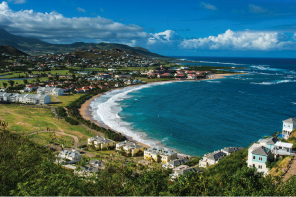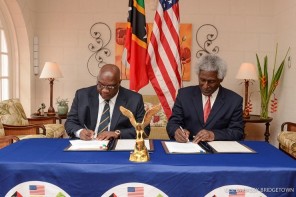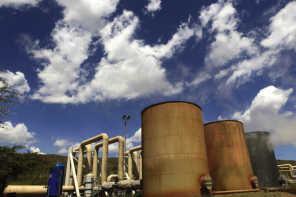St Kitts and Nevis lie in the northern part of the Leeward Islands in the Eastern Caribbean and are separated by a strait two miles wide. The shared land mass is 104 sq miles with a combined population of 45,970.
History
St Kitts and Nevis have one of the longest written histories in the Caribbean, both islands being among Spain’s and England’s first colonies in the archipelago.
St Christopher (St Kitts) was sighted by Christopher Columbus on his second voyage in 1493. It was colonised by the English under Sir Thomas Warner in 1623 and during the following centuries sugar cultivation was the mainstay of the economy.
St Kitts was ceded by the French to Britain by the Treaty of Versailles (1783) and
Nevis was settled by the English in 1628.
Its strategic location and valuable sugar trade led to an advanced and luxurious development over the years that was among the best in the Colonial Caribbean.
Government
The Federation of the twin island state of St Kitts and Nevis attained full political independence in September 1983 and enjoys a democratic type of Government. The Governor General is Her Majesty’s representative.
At General Elections held in February 2015, Team Unity – a coalition of political parties from both islands won at the polls and formed the new Federal Government which is headed by Prime Minster Dr Timothy Harris and is based in Basseterre, St Kitts.
Nevis enjoys internal self-Government and is managed by the Nevis Island Administration which is headed by Premier Vance Amory who is also a Minister of the Federal Government.
The Economy
St. Kitt’s sugar cane production spanned over three hundred and fifty years. The industry was closed down in 2005, due to the removal of trade preferences and un-competitive production costs.
The transition of St. Kitts and Nevis (SKN) to a modern service economy has been quite steady from 2005 with tourism being the main industry hosting around 100,000 stay-over visitors and 500,000 cruise ship passengers annually.
The other major economic drivers are international financial services, real estate, construction, manufacturing, wholesale and retail trading, and transport and communications.
Exports mainly include electronic component production for the US market. The island also boasts of four US-based universities which help in providing medical and veterinary training to around four thousand students.
With their per capita income roughly at US$14,360, St. Kitts has recently graduated to the category of a high-income country as per the World Bank standards.
The Government of St. Kitts have a positive outlook on all those investments on the island which favour the growth of the country and the citizens and this is the reason why they offer generous incentive packages in terms of Corporate Tax Incentives, Export Allowance, Exemption from Import Duties, Hotel Aids Act and Repatriation of Profits.
Tourism
With tourism being the major industry, the government has promoted its expansion by offering several programmes to attract foreign interest and investment including offering lands available for development.
Investors interested in the development of hotels, villas and condominiums take advantage of the available incentives under the Hotel Aids Act and the Government’s Citizenship Programme. The island is definitely geared for major development as the government has played a key role in attracting world-famous hotel chains such as the Park Hyatt and Kol Resort.
St. Kitts has become a luxury property market with the real estate development occurring at an incredible pace. The Citizenship by Investment programme, which was established in 1984, is one of the most distinguished economic citizenship programmes in existence and the government makes use of this initiative to bring in foreign investors with good character who will positively contribute to the island’s development.




